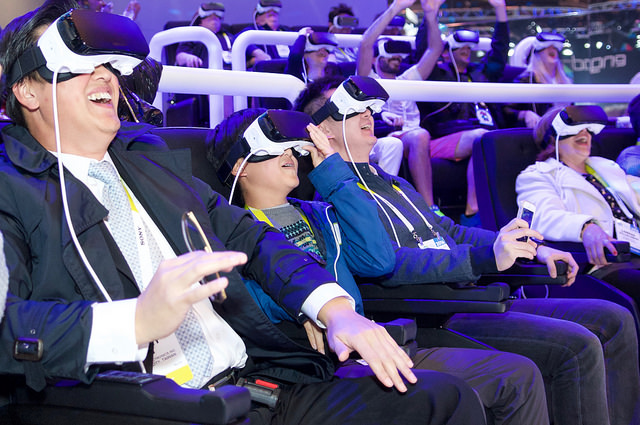HPA Tech Retreat: VR Experts Talk Cameras, Workflow, Markets
February 18, 2016
Virtual reality was the focus of a panel I moderated at the HPA Tech Retreat, which included Phil Lelyveld, who runs the VR/AR initiative at ETC; Stuart English, head of worldwide sales for presence capture at Nokia Technologies; and Steve Schklair, producer, cinematographer and chief executive of 3ality/Technica. Lelyveld described the emerging virtual reality space, first noting the increasing number of VR cameras, from the consumer level (GoPro, Ricoh Theta, Kodak PixPro) to the high end (Nokia, NextVR, Headcase).
Lelyveld also noted the crucial importance of audio in virtual reality; new technologies for spatial capture and lavaliere tracking from Nokia and DTS and Dolby production are at play here. English and Schklair agreed with this assessment, Schklair noting how important audio is to alert the viewer to the direction he/she needs to look. The workflow for VR, a sticking point until now, is beginning to be worked out, said Lelyveld, noting the work of Lucas Wilson at Jaunt VR.
Immersive Technology Alliance’s Neil Schneider has issued VR market projections for the end of 2016, and found that there will be 20 million VR headsets (Cardboard, Gear VR and many others), 3.5 million Sony PlayStation VRs and 300,000 PC-tethered head-mounted displays (Oculus Rift, HTC Vive and others).
Since January 2016, Apple hired Virginia Tech’s Doug Bowman for its Apple VR Lab and Google made Clay Bavor its VR head, with the mandate to take on Oculus/Facebook. WEVR raised $25 million for its Transport VR platform, and Google Cardboard got Spatial Audio support for Unity and Android. Also, at the USC’s School of Cinematic Arts, Jaunt has established a Cinematic Virtual Reality Lab, a 3-year incubator program.
English showed off an example of Nokia’s new OZO camera, about the size of a human head with eight 2K x 2K resolution sensors around it for full 360-degree coverage and eight microphones built-in for immersive audio. English proposed that the video/audio captured by the OZO can’t be held to the same standards as today’s film and TV content; virtual reality is a new arena producing a new kind of media, he said.
Schklair, who is co-producing an episodic VR series, “Defrost,” directed by Randal Kleiser, agreed. Rather than talking about the nuts and bolts of actual production, Schklair made a plea for the development of a storytelling language specific to virtual reality. When asked if he’d seen any VR content that exemplifies this gold standard for VR language, Schklair said he’s seen fleeting scenes and ideas that fall into that category, but that there’s a lot of work to be done to bring it to fruition. All the panelists agreed that current events/news is a likely first market to “pop” for VR content.
He also noted numerous production and post tools — from monitoring to real-time stitching — are needed to improve virtual reality production. It’s entirely possible that the people needed to create those solutions were in the audience; Lelyveld reported statistics from Vivek Wadhwa at Singularity University that people over 50 are 25 percent more successful at startups than younger groups.
Paraphrasing a conversation with Jacqueline Bosnjak, chief executive at Q Department in New York, Lelyveld said, “In VR storytelling, the inherent limitations of gaming don’t apply. We need to bring cinematic visual and audio craftspeople into this field.”
Related:
Leon Silverman Hands Reins of Hollywood Professional Association to Seth Hallen, Press Release, 2/18/16
Hollywood Post Alliance Gets New Leaders – And New Name, Variety, 2/17/16


No Comments Yet
You can be the first to comment!
Sorry, comments for this entry are closed at this time.